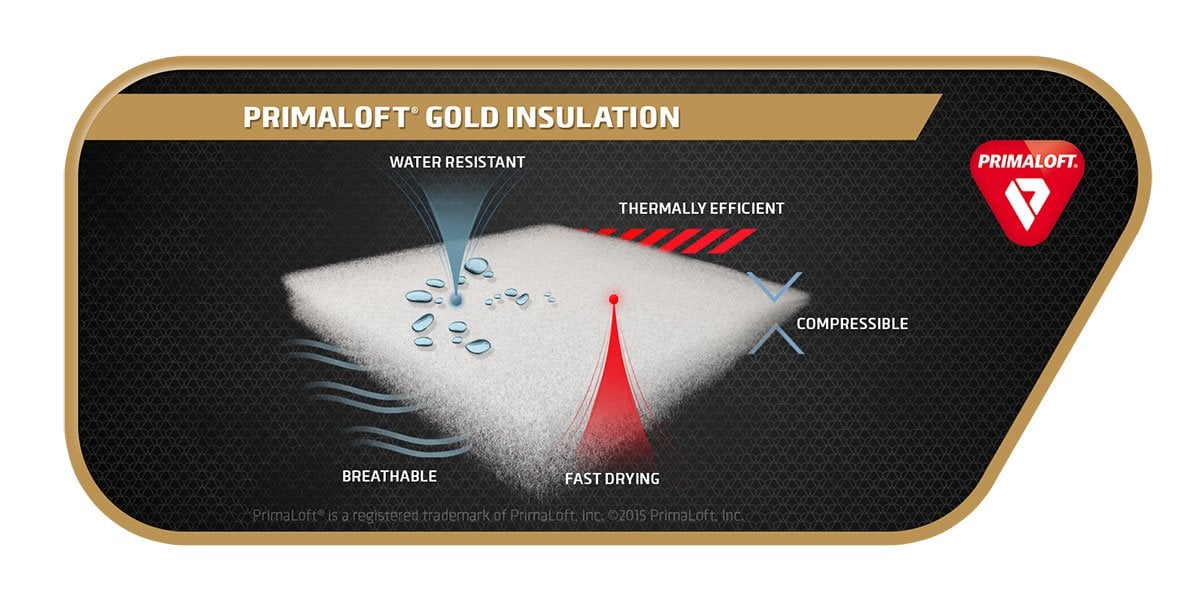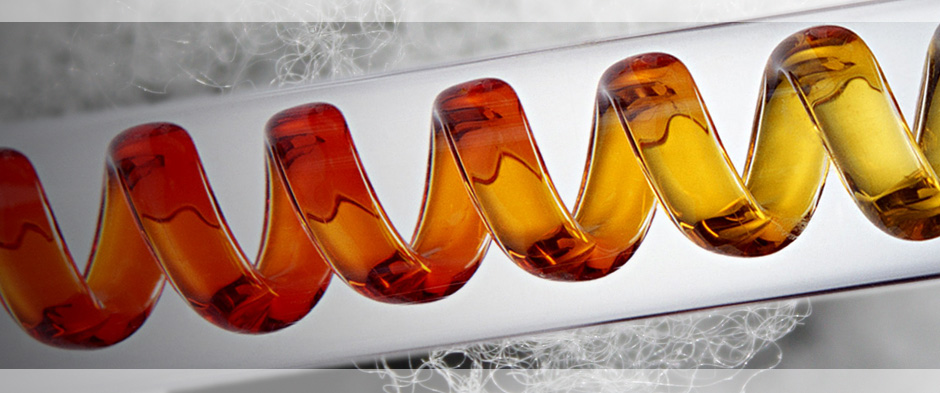The structure itself stems from the original patent filed under US4588635A known as “Synthetic Down”. In the doc, the material is described as a blend of synthetic, spun and drawn, crimped, staple polyester microfibers with a diameter from 3 to 12 microns.

Image source: Primaloft.com
When you think about why this is such a good replacement for down filling it starts to make sense. Extremely small fibres mushed together create uncountable air pockets and trap body heat to keep you warm, the principle used with any other thermal insulation gear.

Scanning electron microscope images of down (left) and PrimaLoft (right).
Image source: Army RD & A
At its core, it works like down filling. The added benefit of using polyester as the base fiber is that it does not absorb water. This material can keep 96% of the insulating ability when wet, by maintaining thickness or loft.
PRIMALOFT VS G-LOFT
Nature often gives ingenious solutions to everyday problems. PrimaLoft originates from mimicking the properties of down.
G-Loft took the next obvious frontrunner – polar bear fur, an animal capable of withstanding the harshest winter conditions. The base of this material is a bi-component spiral fiber. Just like the polar bear’s fur, it’s hollow. Visually it resembles a spring.

Image source: G-Loft
Thanks to this unique spring structure, the material easily jumps back into its existing shape when you compress it e.g. store a jacket in your backpack.
The fibers then form natural clusters similar to those found in down insulation and create air pockets, which retain body heat.

